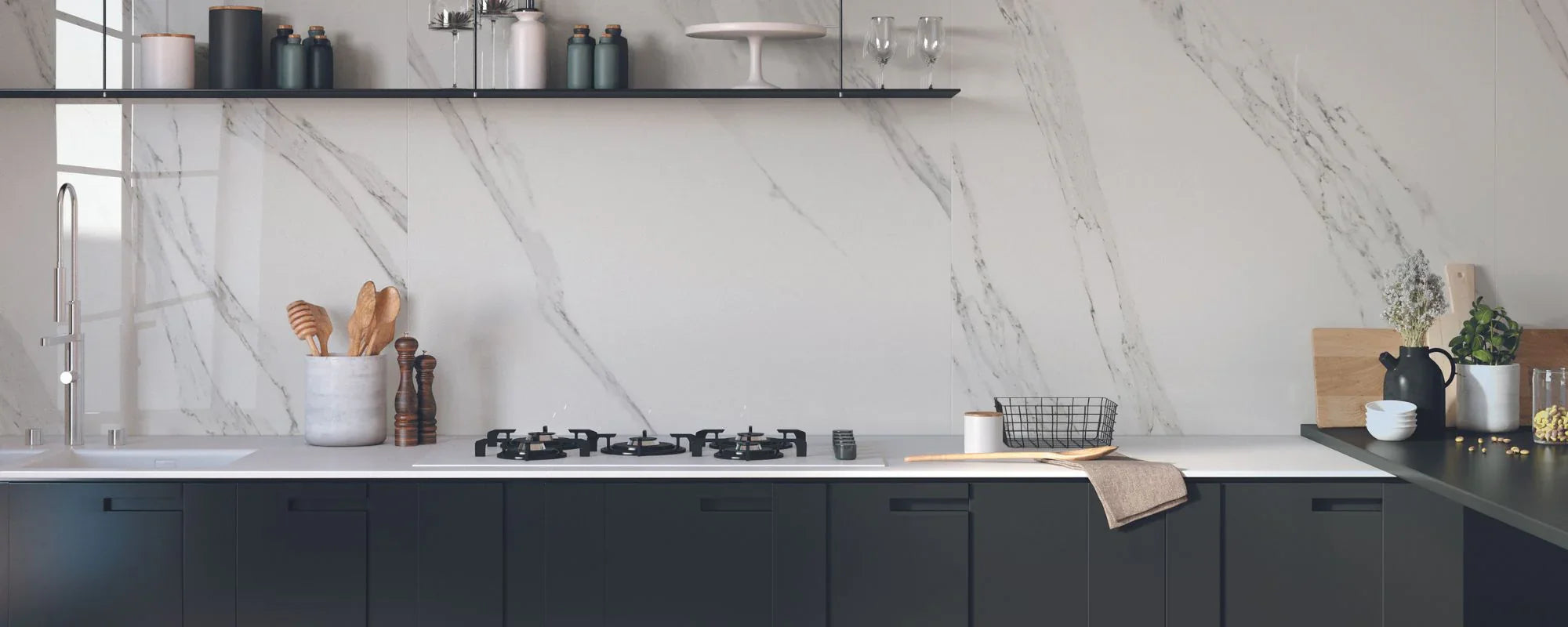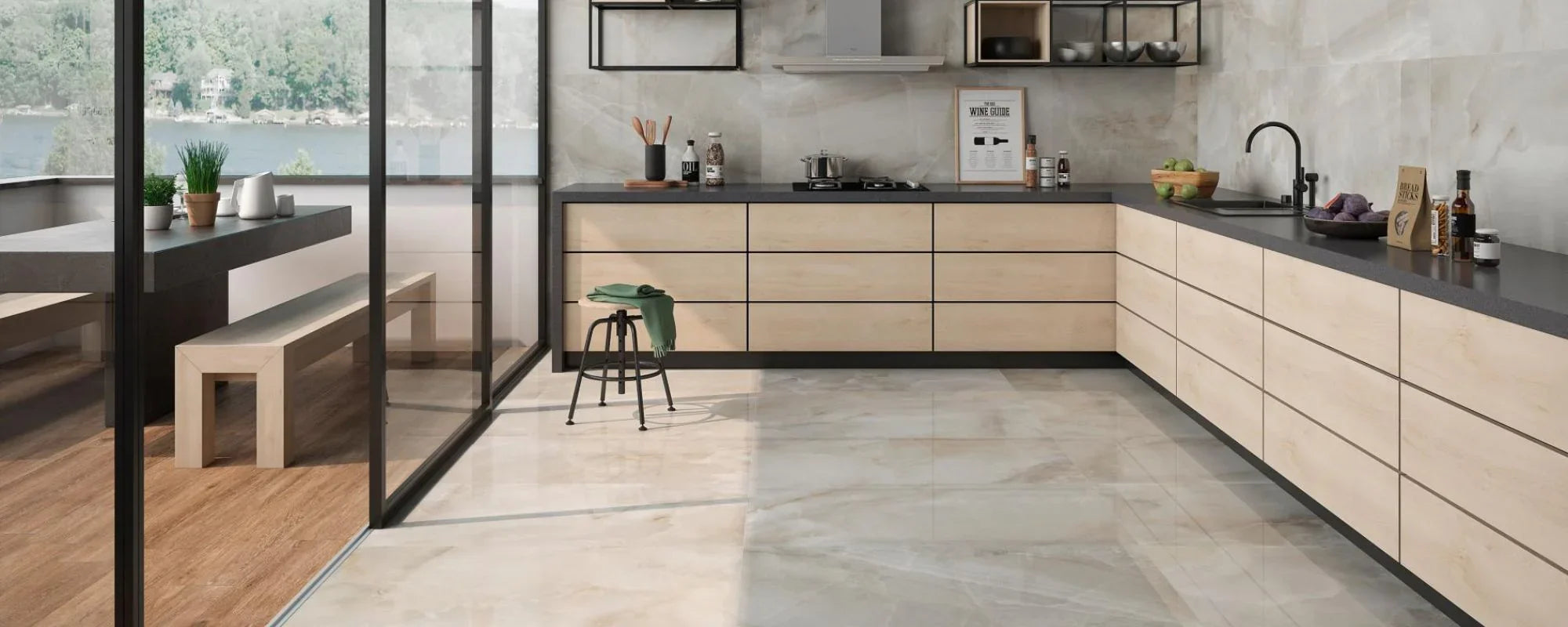Tags:
Design & Ideas
Tiles
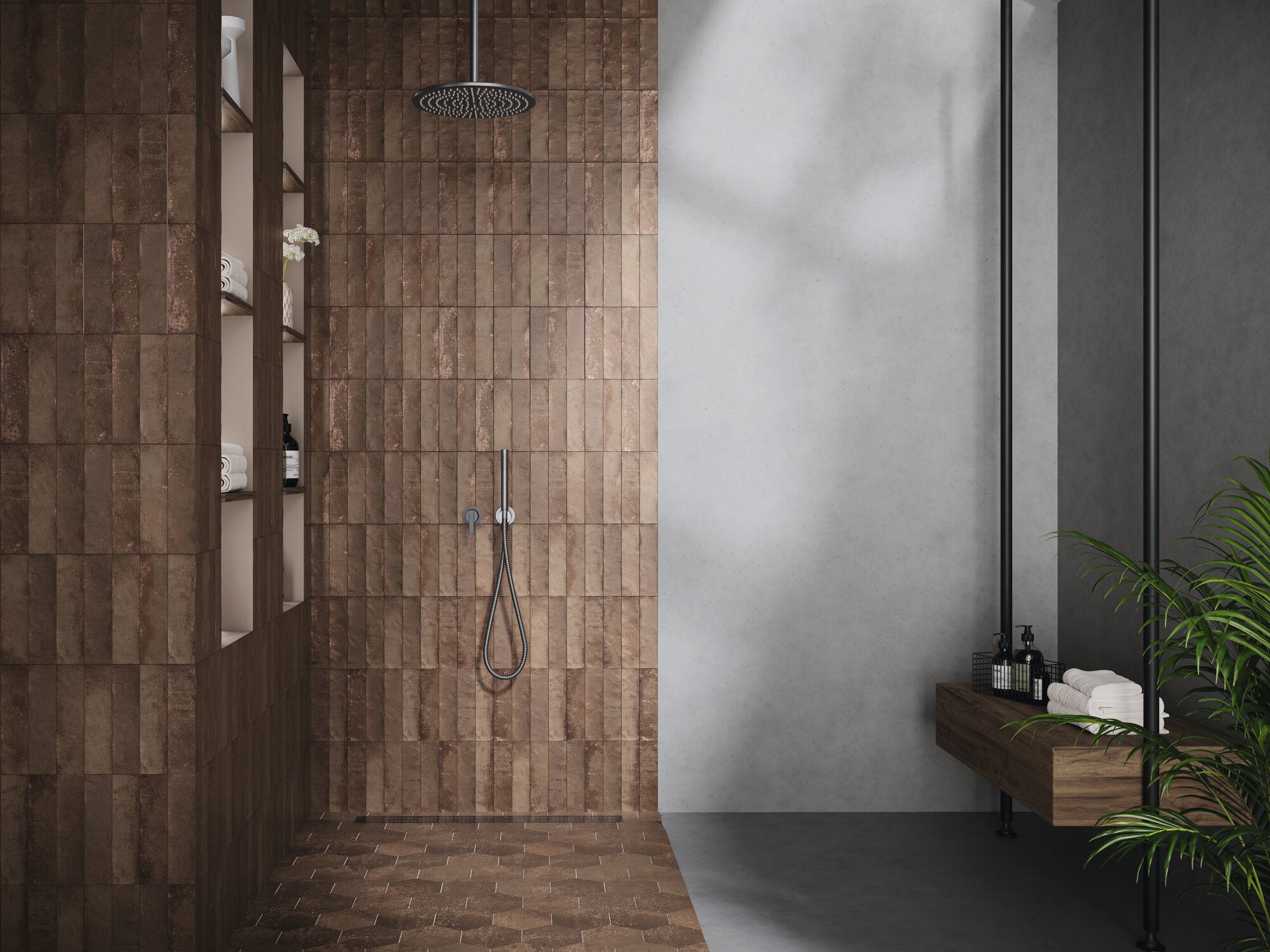
Tile Layout Patterns and Designs: How Tiles Can Transform Your Space
Written by: Halima Bapu
When designing your space, most people focus on colour, size, and finish of tiles. But one overlooked detail that can have a huge impact, is the layout pattern. Tile layout isn’t just about installation, it’s a design decision that shapes how a space looks, feels, and flows. With a wide range of tile patterns and designs available, there is plenty of inspiration for any project, whether you want something classic or bold. The right pattern can make a small bathroom feel taller, turn a hallway into a standout feature, or bring harmony to an open-plan room. At Roccia, we know that the tile pattern matters just as much as the tile itself. That’s why we help clients choose not only the right tiles, but the best way to use them. Our team’s experience ensures you get expert advice on selecting the ideal tile layout for your needs.
Design Principles: The Art Behind the Arrangement
Creating a beautiful tile pattern is about more than just picking a tile you love, it’s about understanding the art of arrangement. The best designs start with a clear vision of the atmosphere you want to create, whether that’s a sleek, contemporary vibe or a warm, traditional feel. From there, consider the size and shape of your tiles: large formats can make a space feel expansive, while smaller shapes like hexagons or classic brick bonds add texture and interest. The pattern you use, whether it's a simple bond, a bold hexagon, or something entirely unique, should compliment both the style of your home and the function of the room. By thoughtfully combining different shapes, sizes, and patterns, you can craft a look that’s both visually stunning and perfectly suited to your lifestyle. Here’s a look at tile patterns that don’t just look good, they transform spaces:

Effortless Movement: Herringbone
A favourite in both traditional and contemporary settings, herringbone introduces a sense of direction and rhythm. It’s especially effective with wood-effect porcelain, where the staggered V-shape mimics classic parquet flooring and helps elongate the space visually. This layout is ideal for narrow areas such as hallways, small bathrooms, and kitchens, where it can open up the space and create flow. On walls, particularly with slim rectangular tiles, it adds subtle depth and visual texture without overpowering the room, yet it remains easy to install and visually impactful.
Herringbone is often used in both residential and commercial spaces for its versatility. This pattern can be used to enhance a variety of interiors, making it a popular choice for those seeking both style and practicality. However, the herringbone tile pattern can be overwhelming if installed across a larger area and furthermore, the herringbone pattern requires careful planning and can be more challenging to install than simpler styles.
— Want a more dramatic version? Chevron creates a similar shape but with sharper angles and a continuous zigzag line, perfect for bold, design-led interiors.
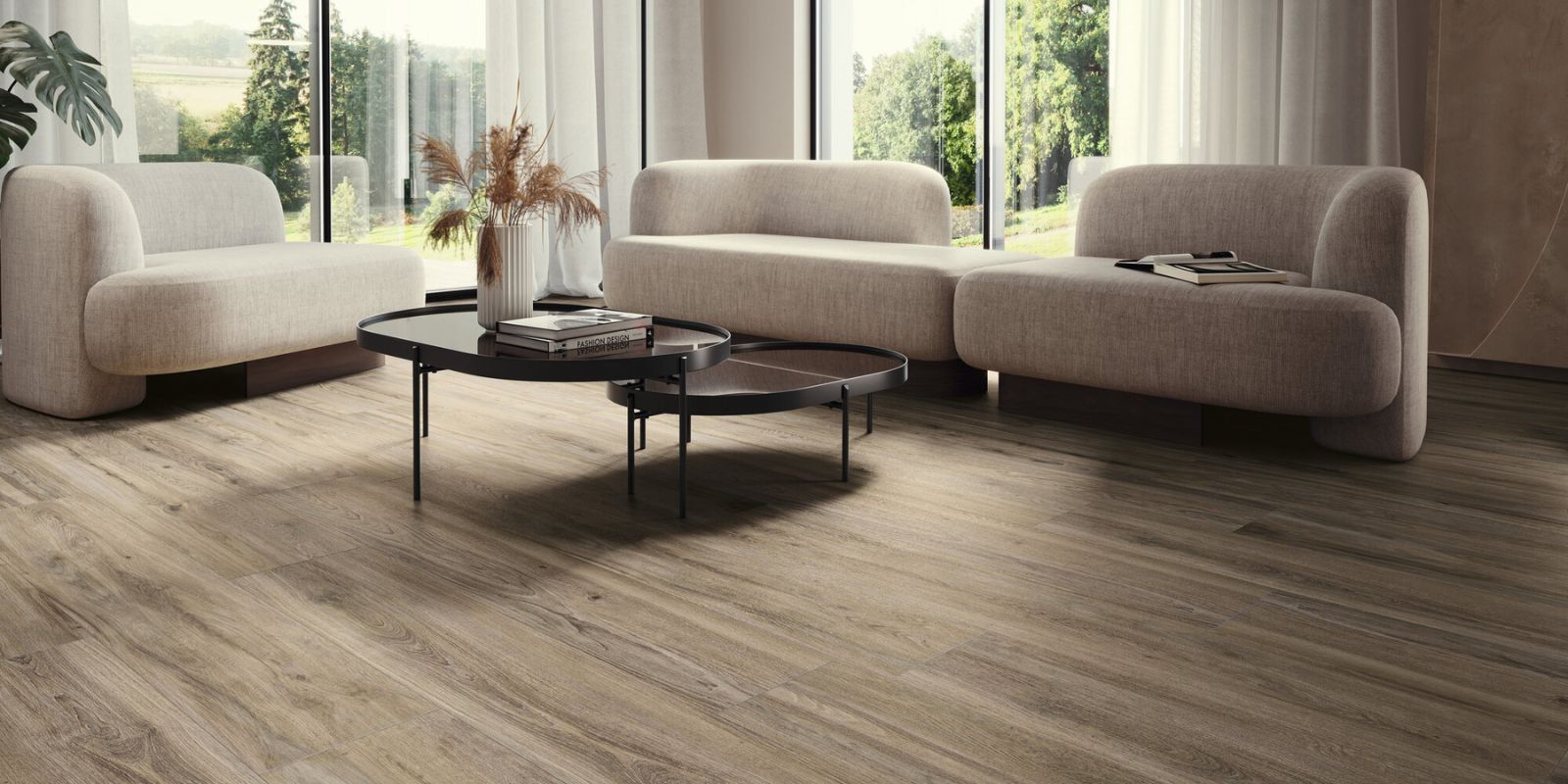
Sleek and Contemporary: Straight Lay
When wanting a more clean and modern finish, straight lay is often the go-to. The linear tile pattern is one of the simplest and most common styles. In this layout, tiles are aligned perfectly, either horizontally or vertically, forming clean lines that give the space a structured feel. Straight lay is a popular choice for floor tiles due to its clean look and easy installation. This pattern is especially suitable for medium to large-format tiles, as their size enhances the seamless effect and makes installation straightforward. Sure, it’s simple, but that’s exactly why it works so well in minimalist or architectural spaces. If you want to keep the design simple and minimalistic, straight lay is an ideal option. Straight lay is especially striking with larger format tiles polished finishes, where the focus is on material and texture. This layout is also one of the most efficient to install, making it ideal for tight timelines or budget-conscious renovations, without compromising on style.
— Why it Installs Faster: Fewer Cuts, Simpler Layout
Different tile patterns come with varying levels of difficulty and may require more or fewer cuts, depending on the design. The straight lay pattern, where floor tiles are installed in neat, straight rows without staggering or rotation, is one of the most straightforward to work with. Because the tiles align cleanly edge-to-edge, there’s often less need for custom cuts around fixtures or edges, helping to reduce material waste and labour time. This makes straight lay a practical choice that still delivers a high-impact, polished look.
This simplicity makes it especially suitable for both professionals and DIY enthusiasts. With fewer alignment issues and a uniform grid of grout lines, it's easier to maintain and clean, especially in high-traffic spaces like bathrooms and kitchens. And because the pattern doesn’t distract the eye, it allows the natural beauty of the tile, whether it be ceramic, porcelain, or stone to truly stand out.
Although often associated with contemporary or minimalist styles, the straight lay pattern can be adapted to a range of aesthetics by playing with tile size, colour, and finish. For instance, using large-format tiles in a straight lay can create a seamless, expansive feel that visually opens up the space. On the other hand, smaller tiles in this pattern, especially when paired with contrasting grout, can add a layer of texture and visual interest.
Whether you’re after a modern look or something more traditional, the straight lay pattern is a versatile, timeless design. Click here to find out the best way to cut tiles.
We recommend purchasing extra tiles to account for any cuts or waste during installation.
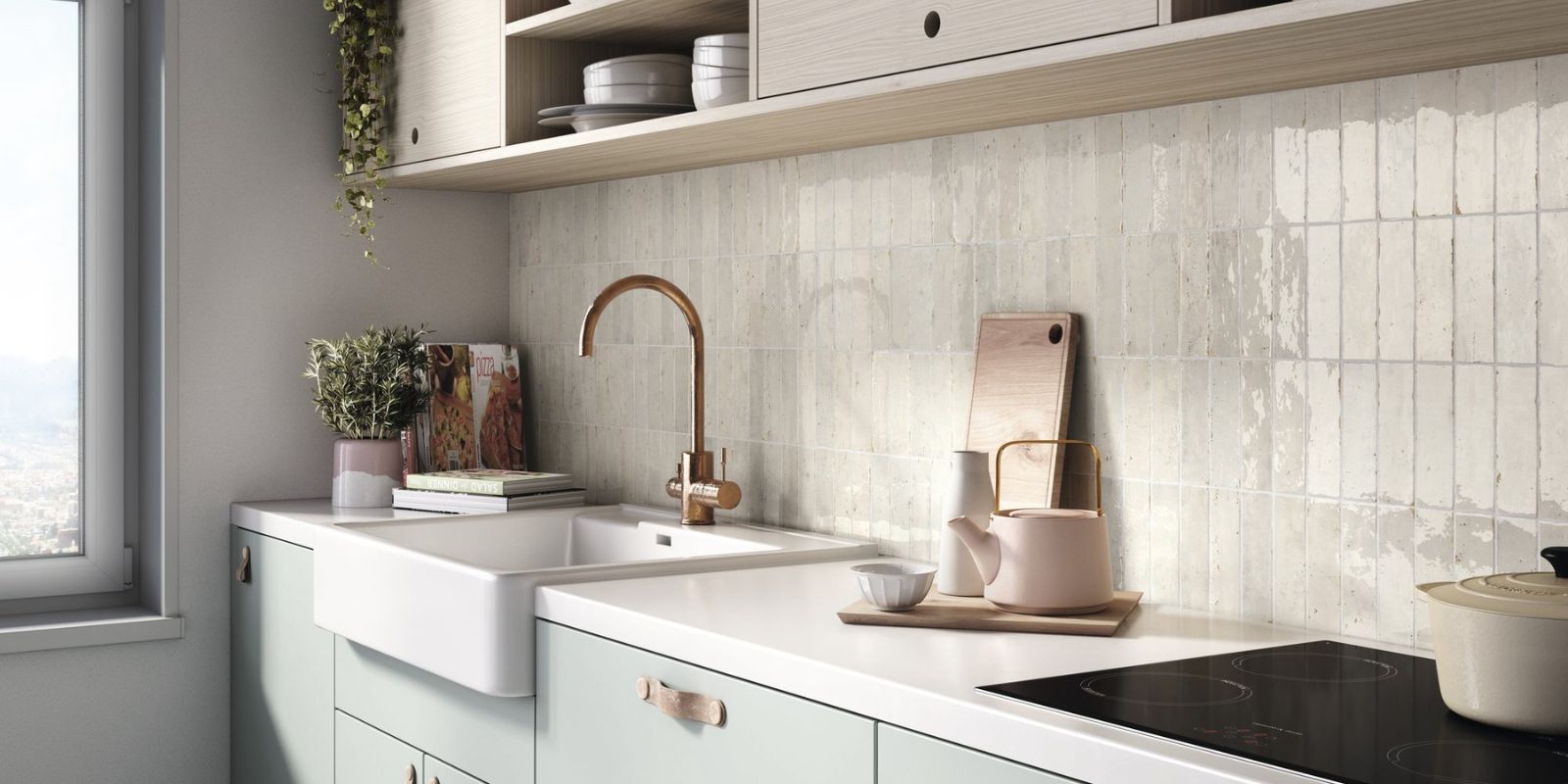
Vertical Stack
Alternatively, you can choose a vertical stack instead of a horizontal layout to create a different visual effect.
Vertical stack also falls into this category of ‘straight lay’ tiles; they’re another more clean and modern layout where tiles are aligned in upright columns. Right now, this pattern is seeing a resurgence with coloured subway tiles, think soft sage, blush, or deep navy, for a look that feels both fresh and timeless. When using the vertical stack pattern, you achieve a sense of height and a sleek, contemporary look that draws the eye upward. It’s the perfect way to bring subtle design interest into a minimalist space.
This pattern works particularly well in smaller rooms or spaces with lower ceilings, as it visually elongates the walls and creates an airy, spacious feel. It’s also an excellent choice for kitchen backsplashes and bathroom walls, where the vertical lines can add a dynamic yet understated texture without overwhelming the space.
One advantage of the vertical stack layout is its relative ease of installation compared to more complex patterns like herringbone or basketweave. It requires fewer cuts and less intricate alignment, making it a practical option for both DIY enthusiasts and professional installers. Moreover, pairing the vertical stack with contrasting grout lines can accentuate the linear effect, adding depth and rhythm to the wall surface.
Whether you choose classic white subway tiles or experiment with bold colours and finishes, the vertical stack pattern offers versatility and timeless appeal. It’s a subtle way to update traditional tile layouts while maintaining a clean, structured aesthetic that complements a wide range of interior styles, from contemporary to transitional.
Vintage with a Twist: Basketweave-
For something with texture and charm, basketweave brings a retro feel that’s perfect for bathrooms, entrance ways, or powder rooms. Basketweave patterns typically use two different tile shapes or sizes, often incorporating square tiles to create the woven effect. Basket weave tile patterns although, are visually busy and can dominate larger areas, so they work better on smaller feature walls so take the time to consider if this pattern is right for your space, as it can add both visual interest and practical benefits. Often made with small marble mosaics, it mimics a woven pattern that adds interest to floor spaces without feeling too busy. Basketweave is particularly effective in areas where you want to introduce subtle patterns and personality and it offers excellent grip for wet floors, too.
Additionally, basketweave patterns can be customized by varying tile colors and materials, allowing you to create a unique look that complements your overall design scheme. The interplay between the different shapes and sizes of tiles can add depth and dimension to your floors or walls, making them a focal point in otherwise simple spaces. While basketweave has vintage roots, it can be adapted to modern interiors by choosing contemporary tile finishes or mixing it with minimalist surroundings. This versatility makes basketweave a timeless choice that bridges classic and contemporary styles.
When planning a basketweave layout, it’s important to carefully measure your space and consider tile size to ensure the pattern fits well and looks balanced. Since the pattern involves alternating tiles, precision in installation is key to achieving the desired woven effect. It’s also worth noting that basketweave can be combined with borders or other tile patterns to frame the design and provide a polished finish. Whether used as a full floor covering, a feature wall, or a backsplash, basketweave adds character and a handcrafted feel to your home.





